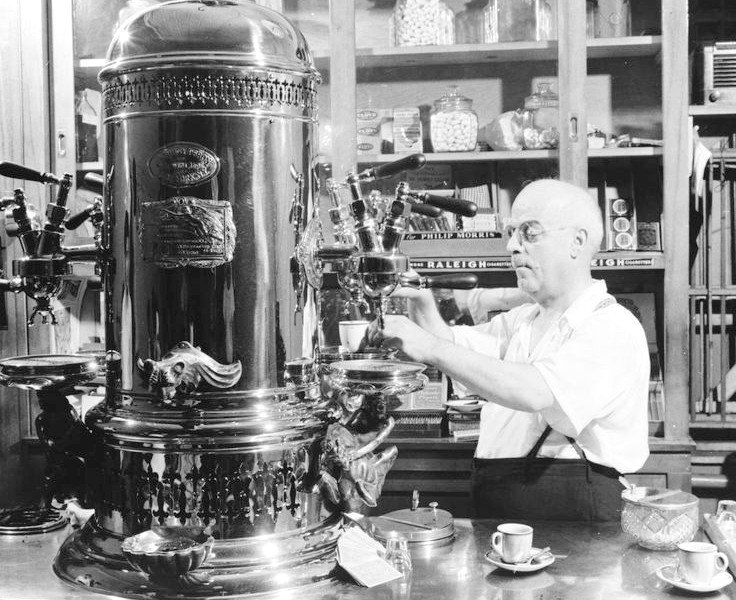Few drinks are as deeply embedded in a country’s culture as coffee is in Italy. From the rich aroma of freshly brewed espresso wafting through bustling city streets to the centuries-old traditions that dictate how and when to enjoy it, Italian coffee is more than just a beverage—it’s a way of life. But how did this coffee obsession begin? Let’s take a journey through history to explore how Italy became the heart and soul of coffee culture.
How Coffee Arrived in Italy: A Venetian Affair
While coffee’s origins trace back to Ethiopia and its early trade flourished in the Arabian Peninsula, it wasn’t until the 16th century that it reached Europe. Venetian merchants, always ahead of the curve, were among the first to bring coffee beans to Italy, thanks to their thriving trade relationships with the Ottoman Empire. At first, coffee was a luxury enjoyed only by the wealthy, a mysterious and exotic drink served in high society circles. But as its popularity spread, it found a permanent home in Italian daily life.
By 1645, Venice saw the opening of its first coffeehouse, a moment that would set the stage for Italy’s long-standing love affair with the dark, rich elixir. These cafés became social hubs where artists, writers, and intellectuals gathered, setting a precedent for the coffee culture that thrives in Italy today.
One traveler wrote of early Venetian cafés: “A place where time slows down, and conversation flows as freely as the coffee itself.” That sentiment still rings true in Italian cafés today.

The Rise of Italian Coffeehouses: Where Culture Meets Caffeine
If walls could talk, Italy’s historic cafés would tell tales of passionate debates, creative breakthroughs, and the exchange of revolutionary ideas. By the 18th century, coffeehouses had spread across Italy, with cities like Venice, Rome, and Naples developing distinct coffee traditions.
Unlike the early Ottoman coffeehouses, which were largely reserved for men, Italian cafés welcomed a mix of patrons, offering a lively environment where people from all walks of life could sip and socialize. Thinkers like Casanova and Goldoni were known to frequent these establishments, fueling their creativity with endless cups of coffee.
One of the most famous surviving cafés from this golden era is Caffè Florian, opened in 1720 in Venice’s Piazza San Marco. Today, it remains a symbol of Italy’s deep-rooted coffee heritage, serving espresso in the same luxurious setting that once hosted the likes of Lord Byron and Charles Dickens.

Espresso: The Italian Coffee Revolution
While coffee was already well established in Italy, it was the invention of espresso that truly revolutionized the way Italians consumed it. In 1901, Luigi Bezzera designed the first steam-powered espresso machine, allowing baristas to brew coffee in seconds rather than minutes. No more waiting for a slow drip—espresso had arrived, and it was here to stay.
This technological breakthrough transformed coffee culture. Italians now had a fast, efficient way to enjoy a bold, concentrated shot of coffee, leading to the rise of espresso bars. By the 1930s, Achille Gaggia’s innovative lever-driven espresso machine further refined the process, producing the signature crema that defines a well-made espresso today.
Espresso wasn’t just a new way of brewing coffee—it became the heartbeat of Italian daily life. Whether sipped “al banco” (standing at the bar) during a quick morning break or shared among friends in the afternoon, espresso became a cherished ritual that endures to this day.
Coffee as a Social Ritual: More Than Just a Drink
In Italy, coffee isn’t something you rush—it’s something you savor. Over the years, Italians developed a refined etiquette around coffee consumption:
- Cappuccino is a morning drink. Ordering it after 11 AM? That’s a tourist move.
- Espresso is an all-day affair. Whether it’s a post-lunch pick-me-up or a late-night indulgence, a shot of espresso is always appropriate.
- No takeout cups. Coffee is meant to be enjoyed in the moment, not carried around in a paper cup.
- No fancy flavors. Italians prefer their coffee pure—no caramel drizzles or pumpkin spice here.
These unspoken rules reflect the deep connection between coffee and Italian identity. It’s not just about caffeine; it’s about pausing, connecting, and appreciating the simple pleasures of life.
The Global Influence of Italian Coffee
Italian coffee culture has left an undeniable mark on the world. The espresso machine, an Italian invention, is now the foundation of coffee preparation across the globe. Drinks like cappuccino, macchiato, and latte—all born in Italy—are now enjoyed in nearly every country.
Even massive coffee chains like Starbucks, despite their American origins, owe much of their format and aesthetic to the traditional Italian café. The ritual of meeting for coffee, whether in a high-end espresso bar or a local coffee shop, is a testament to Italy’s enduring influence.

How to Enjoy Italian Coffee Like a Local
Want to truly experience Italian coffee culture? Follow these simple tips:
✅ Start your day with a cappuccino – but only in the morning!
✅ Order espresso ‘al banco’ – stand at the bar for the true Italian experience.
✅ Skip the flavored syrups – Italians prefer their coffee pure and bold.
✅ Drink it quickly, but enjoy the moment – no lingering over giant lattes.
✅ Respect the post-meal espresso tradition – it’s the perfect way to end lunch or dinner.
Final Thoughts: A Timeless Tradition
From its first arrival in Venetian markets to the invention of espresso and the rise of historic cafés, Italian coffee has always been about more than just a drink—it’s a cultural experience. Whether it’s the morning cappuccino, the midday macchiato, or the late-night espresso, coffee is woven into the rhythm of Italian life.
And while trends come and go, one thing is certain: Italy will always be the soul of coffee culture. So next time you sip an espresso, take a moment to appreciate the centuries of tradition in that tiny cup. Because in Italy, coffee isn’t just a habit—it’s an art. ☕🇮🇹


Leave a Reply